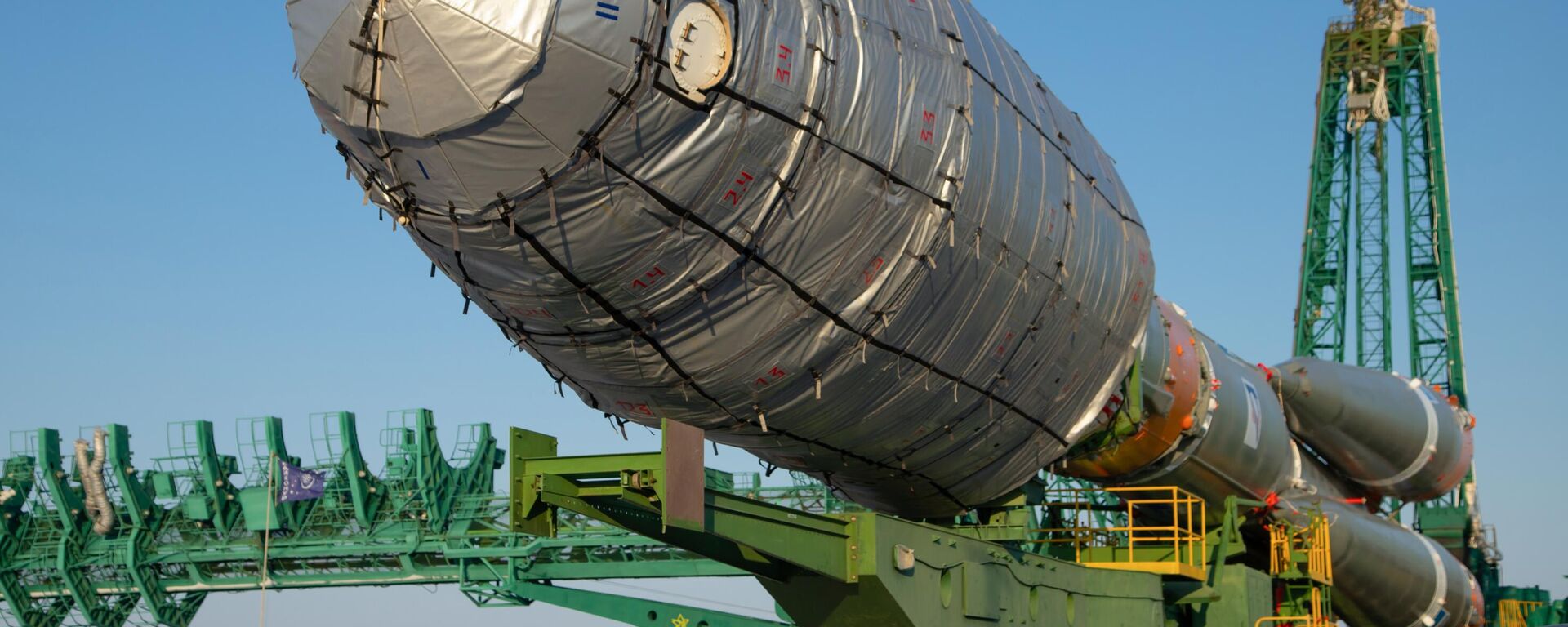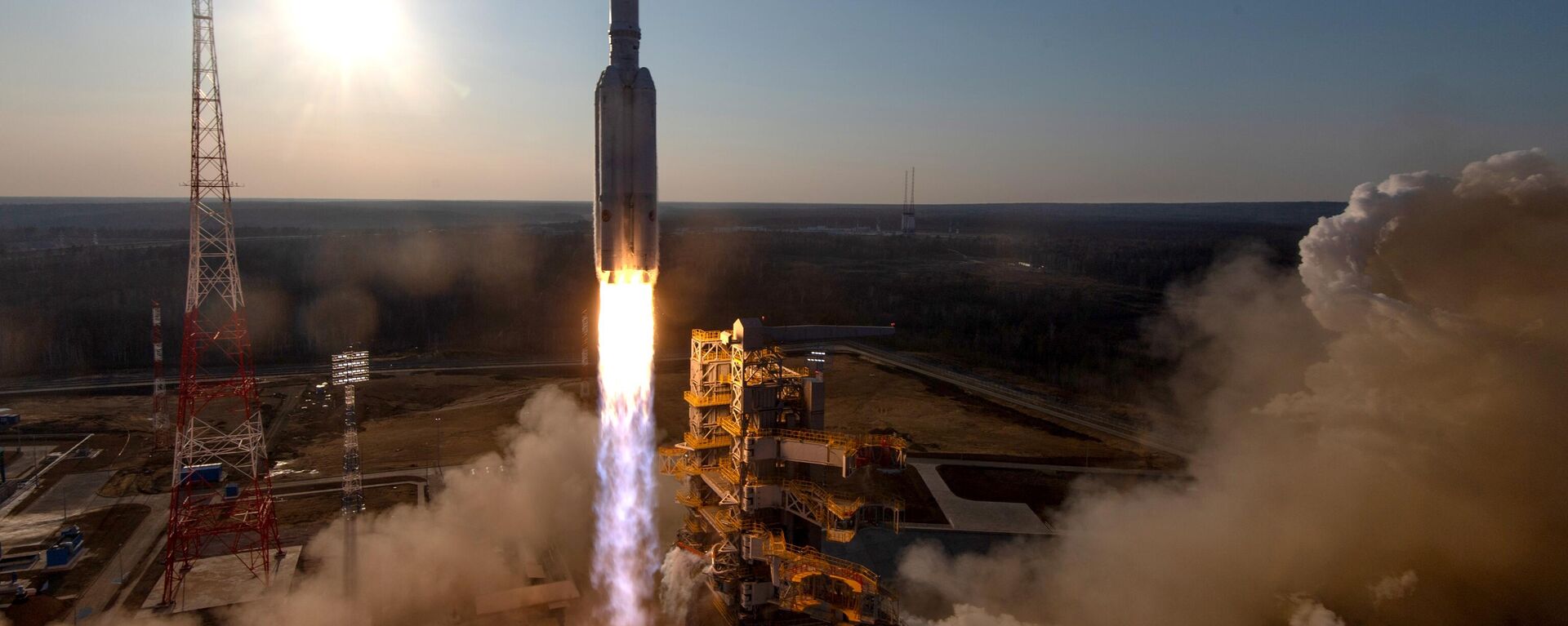https://sputnikglobe.com/20240428/russia-studies-mysterious-ghost-particle-that-affects-whole-universe-1118163914.html
Russia Studies Mysterious ‘Ghost’ Particle That Affects Whole Universe
Russia Studies Mysterious ‘Ghost’ Particle That Affects Whole Universe
Sputnik International
Russian scientists are studying one of the most mysterious particles in nature: the neutrino. The research could give them a deeper knowledge about the standard model of particle physics, the nature of black holes — and evn lift the veil of secrecy over the Big Bang.
2024-04-28T18:13+0000
2024-04-28T18:13+0000
2024-04-28T18:13+0000
beyond politics
science & tech
russia
baikal
lake baikal
russian academy of sciences (ras)
institute for nuclear research
baikal-gvd
antarctica
opinion
https://cdn1.img.sputnikglobe.com/img/07e8/02/14/1116884201_0:38:1281:758_1920x0_80_0_0_2d1b310187eefdad9573c8a8640fcf95.jpg
The first results of Russian experiments conducted with the help of the Baikal deep-sea neutrino telescope Baikal-GVD were published in Physical Review D (PRD), a leading journal in elementary particle physics, last February.Russian scientists confirmed the presence of a neutrino flux of astrophysical nature previously discovered at the IceCube Neutrino Observatory in Antarctica.»In the last decade we have observed a transition to multichannel astronomy — when it becomes possible to study an object or phenomenon using different forms of astronomy. This includes the search for neutrino radiation.»What is a Neutrino?Neutrinos are tiny subatomic particles very similar to electrons, but they have no electrical charge and their mass is very small. Even though neutrinos are the most common particles in the universe it’s incredibly difficult to detect them because they do not interact very often with other particles. Sometimes they are referred to as «ghost particles.»At the same time neutrinos are the most penetrating subatomic particles in the world: they are capable of passing through literally everything without causing any reaction or inflicting any harm. In fact, trillions of neutrinos are passing through one’s body every second.Back in 1930, quantum physicist Wolfgang Pauli predicted the existence of the «neutrino» while solving the problem of the apparent loss of energy in the process of radioactive beta decay. While the law of conservation of energy says that the total energy of an isolated system remains constant, it appeared at the time that beta-decay went contrary to that principle. Pauli suggested the existence of a non-interacting particle with no electric charge which could solve the riddle and re-validate the conservation law.In 1955, Pauli’s theory was confirmed: physicists Clyde Cowan and Frederick Reines of the Los Alamos National Laboratory managed to detect neutrinos from beta decay inside a nuclear reactor at the Savannah River Site in South Carolina.The Neutrino is Part of EverythingEven though it appears that neutrinos barely interact with other particles, they have had a considerable impact on various elements in the Universe.In 1975 Domogatsky and his colleague Dmitry Nadezhin introduced a concept of a «neutrino nucleosynthesis».»Lithium consists of 93 percent of lithium-7, followed by lithium-6,» he explained. «The chemical composition of these light elements without neutrinos would be completely different.»Russia’s Neutrino ResearchAs of 2019, there were three experiments conducted in Russia in order to detect so-called «sterile neutrinos», according to the Rosatom State Atomiс Energy Corporation that participated in the projects.The first experiment, DANSS, is taking place at the Kalinin Nuclear Power Plant (NPP). One nuclear reactor at the plant is used as a source of neutrinos. A detector at the station registers antineutrinos coming from a nuclear reactor.The second experiment is Neutrino-4. which is being carried out in Dimitrovgrad at the SM-3 research reactor at RIAR. The third, BEST, is being conducted in Kabardino-Balkaria, at the Baksan Neutrino Observatory of the Institute for Nuclear Research of the Russian Academy of Sciences.The forth project employing the Baikal Neutrino Telescope was launched in March 2021.»By and large, some impressive scientific results have started to emerge only recently. The first articles have begun to be published in reputable journals, and there is an active discussion of these results, too. So far, a small number of events have been registered, but things are moving forward. We register astrophysical neutrinos — those that were born not in the Earth’s atmosphere, but far beyond its borders.»The scientist noted that he and his colleagues have been collaborating with their foreign peers for many years.When asked what the size of the neutrino telescope Baikal-GVD is, Domogatsky responded:»The concept of size in such a system is quite arbitrary. Even the concept of ‘effective volume’, which works when solving a scientific problem, is not entirely accurate. It is necessary to determine exactly for what purpose it is used. If the task is to register cascade events from high-energy neutrinos, then we have significantly exceeded 0.5 cubic kilometers. In the next two or three expeditions, we will get close to a cubic kilometer.»The scientist highlighted that Russia is now moving faster in its neutrino research, expressing hope that new breakthroughs are around the corner.
https://sputnikglobe.com/20240427/russia-creates-1st-space-surveillance-system-over-arctic—roscosmos-1118150198.html
https://sputnikglobe.com/20231116/supernovas-cosmic-blast-temporarily-depleted-earths-ozone-shield-last-year-1114991487.html
https://sputnikglobe.com/20240422/why-russias-approach-to-artificial-intelligence-may-save-civilization-1118060439.html
https://sputnikglobe.com/20240412/why-angara-a5s-launch-ushers-in-new-era-for-russias-space-exploration-1117899968.html
russia
baikal
lake baikal
2024
News
en_EN
https://cdn1.img.sputnikglobe.com/img/07e8/02/14/1116884201_110:0:1170:795_1920x0_80_0_0_8a7043050ef25f05ebdf500657315f17.jpg
russia, lake baikal, neutrino telescope baikal-gvd, neutrino research, icecube, grigory domogatsky, nuclear reaction, neutrino experiments, russian scientists, space exploration, supernova, big bang theory
russia, lake baikal, neutrino telescope baikal-gvd, neutrino research, icecube, grigory domogatsky, nuclear reaction, neutrino experiments, russian scientists, space exploration, supernova, big bang theory
Russian scientists are studying one of the most mysterious particles in nature: the neutrino. The research could give them a deeper knowledge about the standard model of particle physics, the nature of black holes — and evn lift the veil of secrecy over the Big Bang.
The first results of Russian experiments conducted with the help of the Baikal deep-sea neutrino telescope Baikal-GVD were published in Physical Review D (PRD), a leading journal in elementary particle physics, last February.
Russian scientists confirmed the presence of a neutrino flux of astrophysical nature previously discovered at the IceCube Neutrino Observatory in Antarctica.
«Until now, humanity has gained all its knowledge of the Universe through studying various forms of electromagnetic radiation. This includes radio, direct gamma rays, and ordinary light,» explained Grigory Domogatsky, corresponding member of the Russian Academy of Sciences (RAS), Head of the Laboratory of High Energy Neutrino Astrophysics.
«In the last decade we have observed a transition to multichannel astronomy — when it becomes possible to study an object or phenomenon using different forms of astronomy. This includes the search for neutrino radiation.»
Neutrinos are tiny subatomic particles very similar to electrons, but they have no electrical charge and their mass is very small. Even though neutrinos are the most common particles in the universe it’s incredibly difficult to detect them because they do not interact very often with other particles. Sometimes they are referred to as «ghost particles.»
At the same time neutrinos are the most penetrating subatomic particles in the world: they are capable of passing through literally everything without causing any reaction or inflicting any harm. In fact, trillions of neutrinos are passing through one’s body every second.
Back in 1930, quantum physicist Wolfgang Pauli predicted the existence of the «neutrino» while solving the problem of the apparent loss of energy in the process of radioactive beta decay.
While the law of conservation of energy says that the total energy of an isolated system remains constant, it appeared at the time that beta-decay went contrary to that principle. Pauli suggested the existence of a non-interacting particle with no electric charge which could solve the riddle and re-validate the conservation law.
In 1955, Pauli’s theory was confirmed: physicists Clyde Cowan and Frederick Reines of the Los Alamos National Laboratory managed to detect neutrinos from beta decay inside a nuclear reactor at the Savannah River Site in South Carolina.
The Neutrino is Part of Everything
In 1975 Domogatsky and his colleague Dmitry Nadezhin introduced a concept of a «neutrino nucleosynthesis».
«We tried to solve a problem revolving around the fact that not all isotopes in the origin of chemical elements can be explained,» the scientist said. «There is a concept of ‘bypassed isotopes’, which lie outside the entire chain of nucleosynthesis. And there is a very noticeable thing in the field of light nuclei — lithium-6. It’s exceptionally hard to create it. There are also boron-10 and fluorine-19 — isotopes whose origin is beyond our understanding.»
«Lithium consists of 93 percent of lithium-7, followed by lithium-6,» he explained. «The chemical composition of these light elements without neutrinos would be completely different.»
«We looked at the influence of neutrinos on the chemical composition of the shell that is ejected by a supernova. It turns out there is a powerful neutrino flow that affects the composition of this shell,» Domogatsky said. «Do you know what you and I are made of? Some kind of supernova exploded and threw matter into space. We are the result of a supernova explosion.»
Russia’s Neutrino Research
As of 2019, there were three experiments conducted in Russia in order to detect so-called «sterile neutrinos», according to the Rosatom State Atomiс Energy Corporation that participated in the projects.
The first experiment, DANSS, is taking place at the Kalinin Nuclear Power Plant (NPP). One nuclear reactor at the plant is used as a source of neutrinos. A detector at the station registers antineutrinos coming from a nuclear reactor.
The second experiment is Neutrino-4. which is being carried out in Dimitrovgrad at the SM-3 research reactor at RIAR. The third, BEST, is being conducted in Kabardino-Balkaria, at the Baksan Neutrino Observatory of the Institute for Nuclear Research of the Russian Academy of Sciences.
The forth project employing the Baikal Neutrino Telescope was launched in March 2021.
«There were two stages,» Domogatsky said, commenting on the neutrino experiment on Lake Baikal, considered to be the deepest lake in the world. «The first stage is from the 1980s to the end of the 1990s. After the 1990s the second stage began, when the Joint Institute for Nuclear Research began to become more and more actively involved in our work. Our relations are now completely equal, parity.»
«By and large, some impressive scientific results have started to emerge only recently. The first articles have begun to be published in reputable journals, and there is an active discussion of these results, too. So far, a small number of events have been registered, but things are moving forward. We register astrophysical neutrinos — those that were born not in the Earth’s atmosphere, but far beyond its borders.»
The scientist noted that he and his colleagues have been collaborating with their foreign peers for many years.
«We are conducting [neutrino] research in parallel with the international Ice Cube experiment,» he said. «When this experiment began, their employees were mostly Americans and Swedes. A group of German physicists who worked with us on Lake Baikal and gained their first experience with us also moved there. They used the idea of placing photomultiplier tubes into the ice of Antarctica.»
When asked what the size of the neutrino telescope Baikal-GVD is, Domogatsky responded:
«The concept of size in such a system is quite arbitrary. Even the concept of ‘effective volume’, which works when solving a scientific problem, is not entirely accurate. It is necessary to determine exactly for what purpose it is used. If the task is to register cascade events from high-energy neutrinos, then we have significantly exceeded 0.5 cubic kilometers. In the next two or three expeditions, we will get close to a cubic kilometer.»
The scientist highlighted that Russia is now moving faster in its neutrino research, expressing hope that new breakthroughs are around the corner.
«Neutrinos work, they are extremely important. And our task is to understand as much as possible about them in order to understand our world and learn to live in it better than we live now,» Domogatsky concluded.





